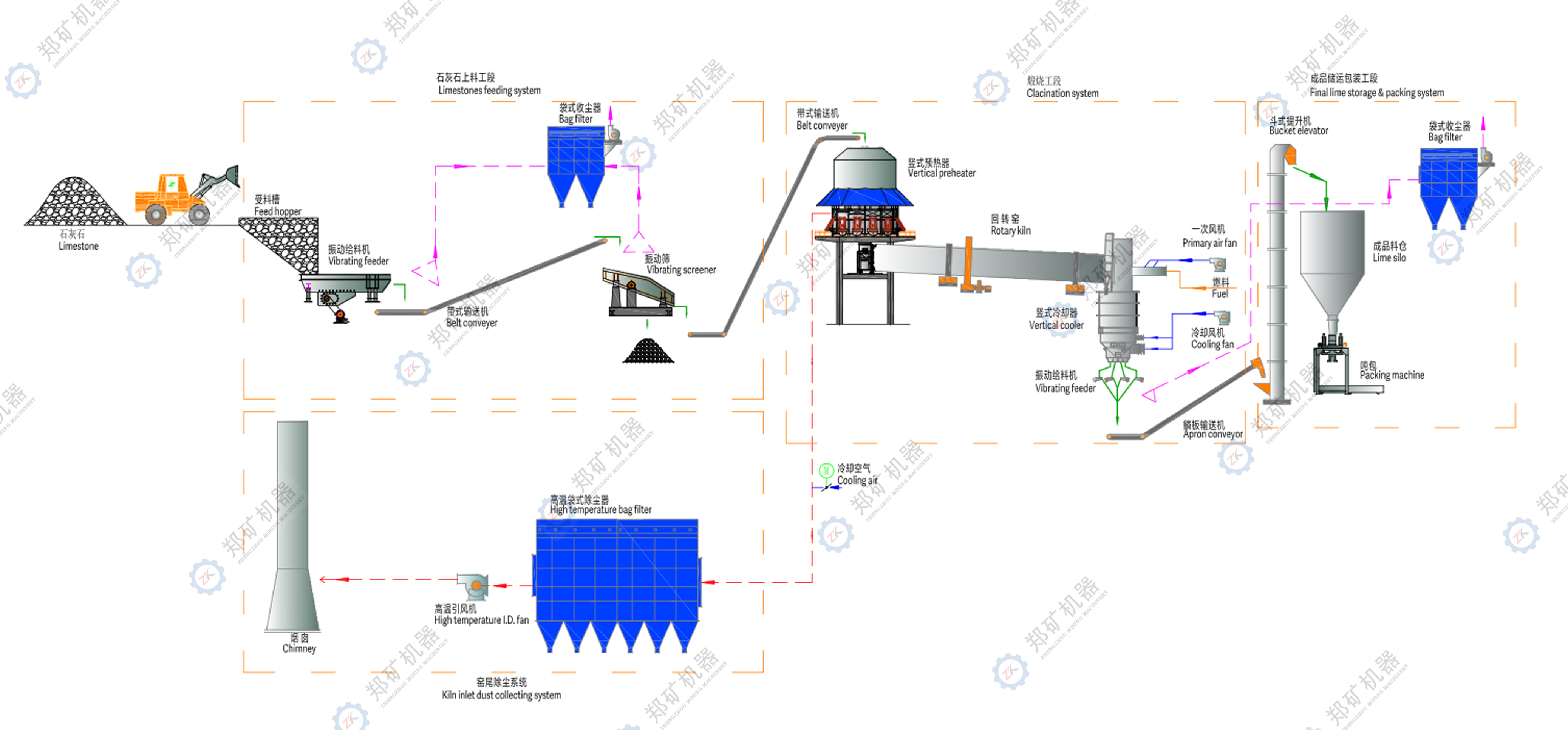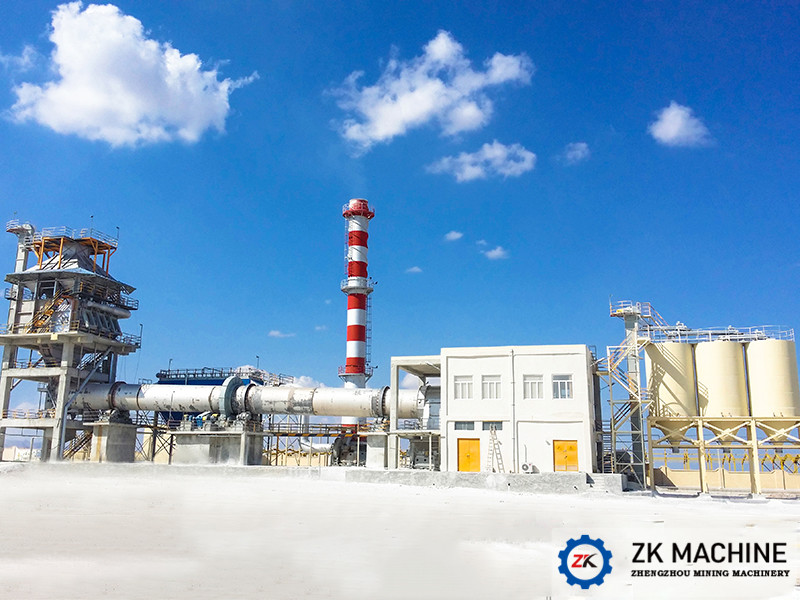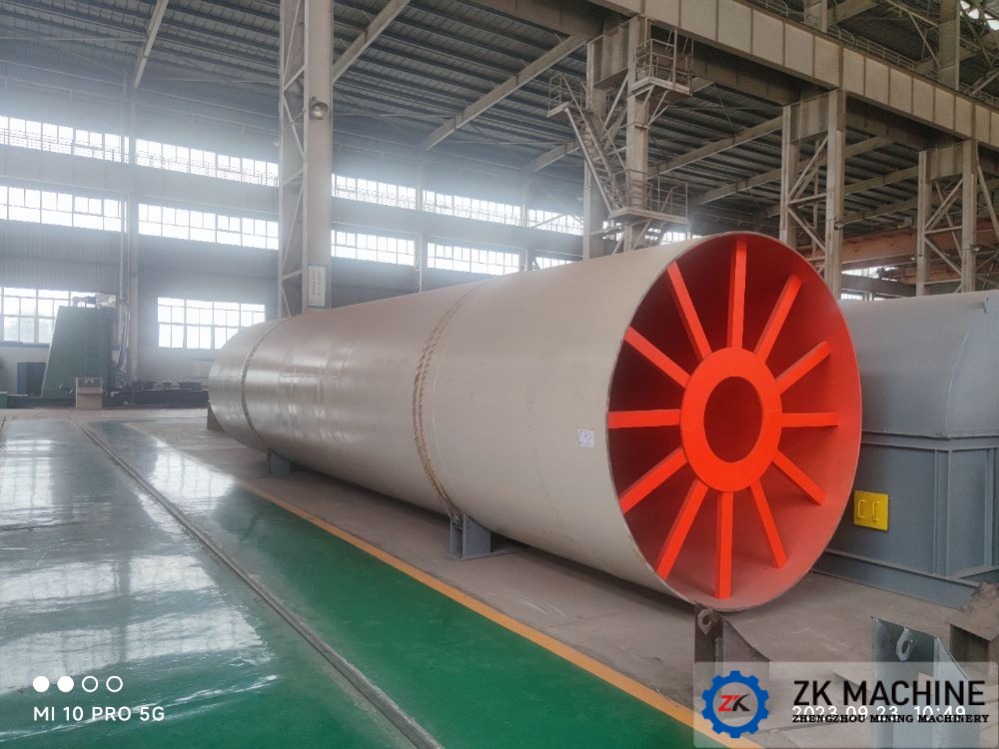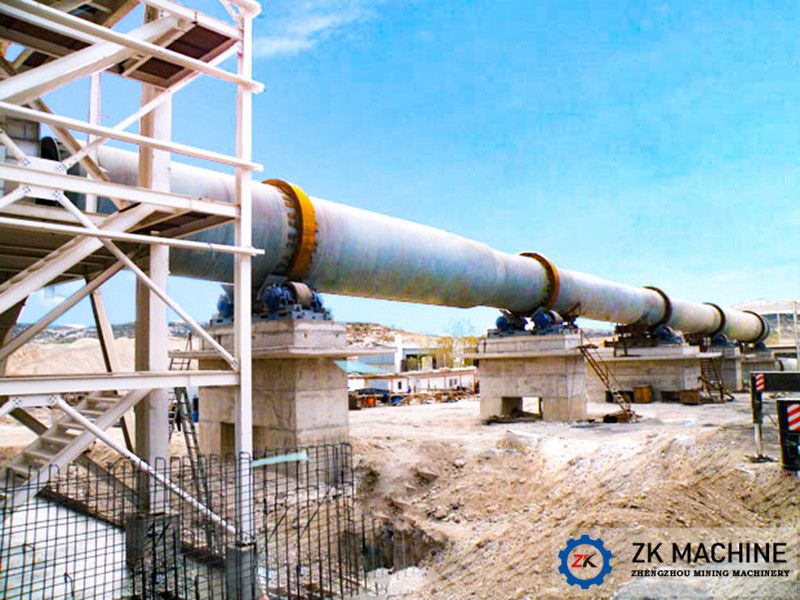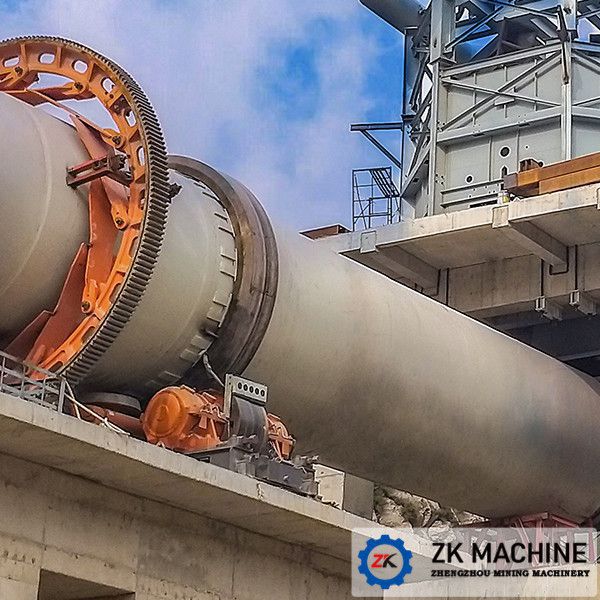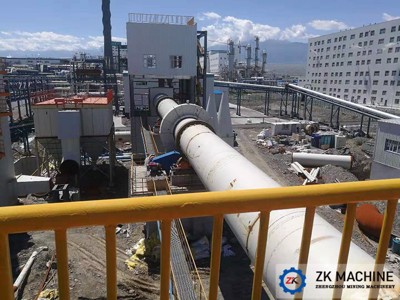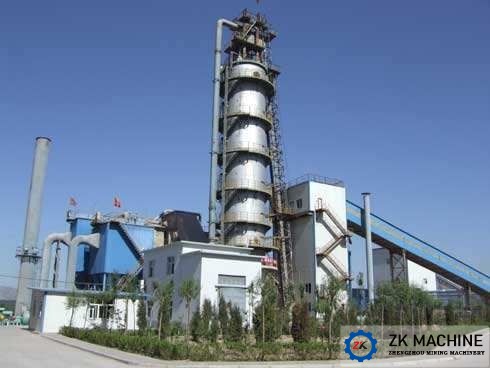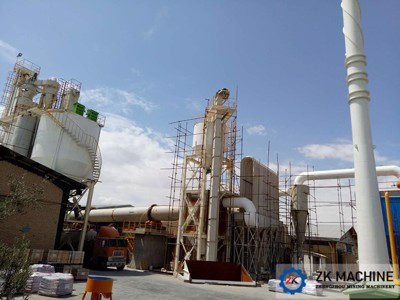(1) Raw material storage, transportation and delivery
Limestone with a particle size of 10-50mm is transported to the factory area and stacked in the stockyard. Loaders are used for the stockyard operations. The material with qualified particle size is loaded into the receiving trough set up in the material yard by the loader, and under the receiving trough is quantitatively fed by the feeder, the stone is fed to the inclination conveyor, and then sent to the screening building, where the limestone is screened After being divided, the qualified particle size is weighed and sent to the silo on the top of the preheater by a large inclination conveyor. The powder under the sieve is sent to the storage yard by the 3# conveyor and is regularly transported out by a forklift.
(2) Limestone calcination
Limestone calcination is composed of a vertical preheater + a rotary kiln + a vertical cooler, with an output of 100~1200t/d. The material is fed into the preheater body from the silo on the top of the preheater through the discharge chute, and at the same time by the rotary kiln The incoming high-temperature flue gas preheats the material to above 1000°C to partially decompose the limestone, and then is pushed into the tail of the rotary kiln by a hydraulic push rod in turn, after being calcined at a high temperature in the rotary kiln, it is discharged into the cooler and blown in by a fan The material is cooled by the cold air, and the material is cooled to the ambient temperature +60 ℃ or less and discharged from the cooler. The air blown in by the cooler enters the rotary kiln as secondary air to participate in combustion.
(3) Finished product delivery
The finished lime is unloaded from the cooler and transported to each finished lime storage by chain conveyor, bucket elevator and belt conveyor. The discharge valve under the lime storage silo is used to load the lime in the silo into cars and tankers for transportation. Set up storage silos of different sizes according to customers' reserve requirements.
The finished product silo adopts circular silo, 2 5-50mm finished product silo, 1 finished product silo less than 5mm, the volume of each silo is about 800t;
(4) Flue gas treatment
The high-temperature flue gas generated by the combustion of the rotary kiln is exchanged with limestone in the preheater, and the temperature is reduced to below 250 ℃, and then enters the cyclone dust collector for primary dust collection to collect large particles of dust, and then It enters the bag filter and is discharged into the atmosphere by a high-temperature fan after dust removal. The dust concentration of the exhaust gas is less than 30mg/m3. A cold air control system is installed at the inlet of the dust collector to protect the dust collector.
